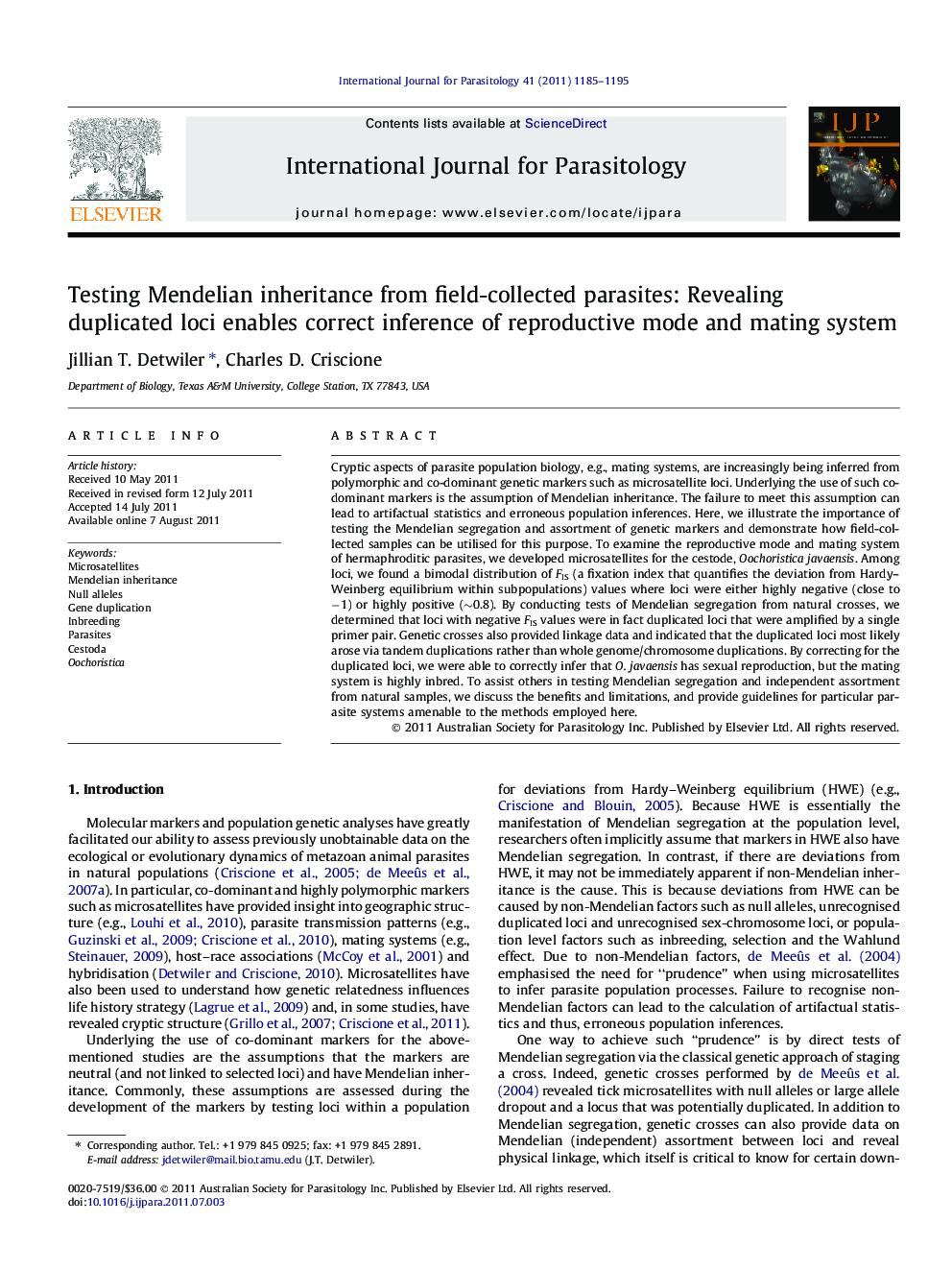| Article ID | Journal | Published Year | Pages | File Type |
|---|---|---|---|---|
| 2436192 | International Journal for Parasitology | 2011 | 11 Pages |
Cryptic aspects of parasite population biology, e.g., mating systems, are increasingly being inferred from polymorphic and co-dominant genetic markers such as microsatellite loci. Underlying the use of such co-dominant markers is the assumption of Mendelian inheritance. The failure to meet this assumption can lead to artifactual statistics and erroneous population inferences. Here, we illustrate the importance of testing the Mendelian segregation and assortment of genetic markers and demonstrate how field-collected samples can be utilised for this purpose. To examine the reproductive mode and mating system of hermaphroditic parasites, we developed microsatellites for the cestode, Oochoristica javaensis. Among loci, we found a bimodal distribution of FIS (a fixation index that quantifies the deviation from Hardy–Weinberg equilibrium within subpopulations) values where loci were either highly negative (close to −1) or highly positive (∼0.8). By conducting tests of Mendelian segregation from natural crosses, we determined that loci with negative FIS values were in fact duplicated loci that were amplified by a single primer pair. Genetic crosses also provided linkage data and indicated that the duplicated loci most likely arose via tandem duplications rather than whole genome/chromosome duplications. By correcting for the duplicated loci, we were able to correctly infer that O. javaensis has sexual reproduction, but the mating system is highly inbred. To assist others in testing Mendelian segregation and independent assortment from natural samples, we discuss the benefits and limitations, and provide guidelines for particular parasite systems amenable to the methods employed here.
Graphical abstractFigure optionsDownload full-size imageDownload high-quality image (93 K)Download as PowerPoint slideHighlights► Non-Mendelian markers can lead to incorrect inference of population processes. ► Unrecognised duplicated loci created a high variance in inbreeding coefficients, FIS. ► Genetic crosses were necessary to test the assumption of Mendelian inheritance. ► Crosses from field-collected parasites revealed duplicated microsatellite loci. ► A highly inbred mating system was found after accounting for non-Mendelian markers.
